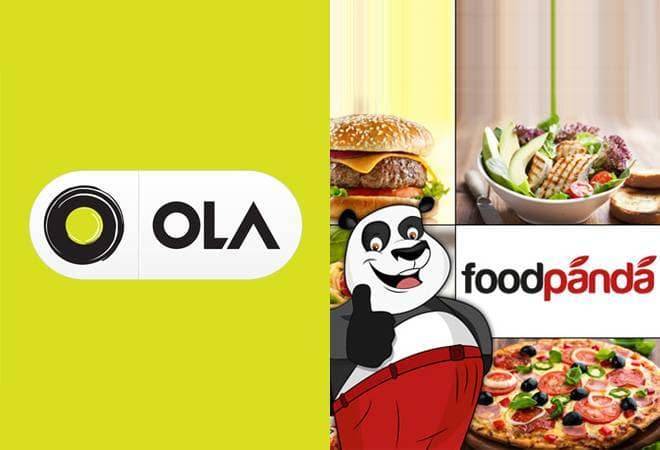This article is written by Shriyanshi Chitransh, a student of FIMT school of Law, GGSIPU. Here she has given a brief review about the Ola-FoodPanda Merger and the latter’s termination.
Table of Contents
Introduction
India’s homegrown taxi services Ola stepped into the food delivery business once again. On December the 19th, 2017, Ola announced a deal of acquiring FoodPanda’s India Business from its German parent company Delivery Hero Group in an exchange of ola stock for an undisclosed amount. Sourabh Kochhar, CEO of FoodPanda decided to move on to pursue different opportunities meanwhile Ola’s founding partner took the position of interim CEO of the foodpanda delivery business. Ola planned to infuse around $200 million into FoodPanda. This deal marks Ola’s second foray into the food business. In 2015, the taxi Giant launched an Ola Cafe in four cities but due to its unimpressive performances, it was shut down, on account of stiff competition with Swiggy and Zomato. Ola’s approach was not limited to food delivery, the company also attempted at hyperlocal grocery stores in Hyderabad, Gurugram, and Bengaluru named Ola Store but later shut down in a month of the commencement.
Background
DeliveryHero acquired FoodPanda from the German Rocket Internet in the year 2016. Primarily to extend his food delivery business into Middle-East, Asia, and some parts of Eastern Europe where foodpanda is running. Foodpanda was not in a good position in India as quite intended. The company came into trouble with operations comprising fake listing and unreliable deliveries and laid off 300 staff at the end of the year 2015.
Delivery Hero was looking for selling FoodPanda India since its acquisition from Rocket Internet in December.
Foodpanda made several attempts at merging with Faasos and Zomato while Delivery Hero contributed to invest a considerable capital if the merger happens. However, the deal did not work out with Foodpanda’s huge overhead costs making the deal plain.
Delivery Hero has made a positive change to Foodpanda Business but they were against some deep competition. Swiggy is backed up Naspers and Zomato have gained enough popularity and resonance among the public, International giants UberEats have also joined the industry.
Fascination towards food delivery market
The main purpose of the merger with the Foodpanda is to compete with the international San Francisco based ride-hailing company Uber.
UberEATS is a meal ordering and delivery app, which was launched in India in may 2017 and then was extended to many cities. Foodpanda had made access through ola of the food delivery firm’s network of over 15,000 restaurants across more than 100 cities. Food delivery is the fastest-growing market. Foodpanda already had a brand name and by having the acquisition of the company, the cab aggregator had an edge as it has owned something with a scale rather than starting something from scratch.
Abuse of dominant position
In December 2018, Kerala Hotels and Restaurant Associations (KHRA) went on a 10 days strike on the account of immense discounting methods used by food delivery apps such as foodpanda, etc. It was assumed that if the situation persisted, the restaurant would suffer huge damages in the long run. There is competition in every field and the food delivery industry is not left instead is one of the most competitive industries of recent times. After the complaint filed by the retailers and shopkeepers, 500 small restaurant owners too reported in the CCI and PMO regarding the domination in food listing by the delivery apps. The petition was filed against them on the account of high-discounting, in-house kitchens, and internal sourcing, due to which small and medium enterprises have to suffer a lot.
The Competition Act, 2002 explains the dominant position which is enjoyed by an enterprise in on the account being on the position of strength which enables the enterprise to run independently of the competitive forces existing in the pertinent market or affects its competitors and consumers or the pertinent market in favour.
Moreover, the act was passed to maintain the economic development of the country and the establishment of the commission that will reduce the practices having adverse effects on the Competition and sustain competition in the market and ensure freedom of trade in the market.
It is in the capacity of an enterprise to behave independently that ascertain the dominant position of the enterprise. In a perfectly competitive market, the enterprise has no control over the market and the price of the product. However, in perfect market conditions, the enterprise enjoys the position of determining the prices on its own and thus enjoys the position of being dominant in the market. Having domination is not an issue until and unless that domination becomes an abuse.
Here are three primary stages which depict the abuse of being in the dominating position of an enterprise in the market:
- The first stage is to define the pertinent market.
- The second is to determine whether the concerned enterprise is in a dominant position and has a notable amount of market power in that pertinent market.
- The third stage is to determine that the concerned enterprise in the dominating position having a notable amount of market power is abusing its power or not.
Abuse of a dominance
Under Section 4 of the Competition Act, 2002 defines the abuse of a dominant position. Section 4(1) states that no enterprise or group should abuse its dominant position in order to gain more profits in the relevant market. Being in a dominant position is not an issue but abusing that position which results in the cause of damage to other related parties is bad. The section gives an exhaustive list of what is determined to be abuse by the enterprise or group being in a dominant position.
The list specifies the terms which were used by the enterprises or group to exert their power which is given below:
- Directly or indirectly imposing discriminatory or unfair terms in the purchase or sale of goods or services.
- Directly or indirectly imposing discriminatory or unfair prices in the purchase or sale (including predatory price) of goods or services.
- Limiting or restricting the production of goods or provision or market
- Limiting or restricting the technical or scientific development relating to goods or services to the prejudice of consumers.
- Indulging in practices that result in denial of market access in any manner.
- Making conclusions of contracts subject to acceptance by other parties of supplementary obligations which, by their nature or according to commercial usage, have no connection with the subject of such contracts.
- Using the dominant position in one pertinent market to enter into, or protect another pertinent market.
Inquiry under the abuse of a dominant position by the Enterprise
Under Section 19(4) the act has described the terms which the commission shall while inquiring to check whether the enterprise enjoys the Dominant position or not under section 4. Under section 4, a detailed list of factors has been enlisted which are market share of the enterprise, size, and resources of the enterprise, size, and importance of the enterprise, dependence of the consumers on the enterprise, social obligations, entry barriers, market structure and size of the market, a dominant position acquired by the virtue of being a Government company or a public sector undertaking in the pertinent market or national geographic market.
Abuse of power is specified into two broad categories: Exploitative (excessive or discriminating pricing) and Exclusionary (eg. denial of market excess).
The CCI, in HT Media Ltd v Super Cassettes Ltd (2014) case observed that the pricing rates can be exclusionary (pricing the products below the cost as to foreclose the competitors) as well as exploitative (where the dominant enterprise is proved to be using its position and exploiting others). It was held in the court that the Super Cassettes Ltd. had both exclusionary and exploitative.
In Shri Shamsher Kataria vs Honda Siel Cars India Ltd & Ors (2014) (Auto Parts case), two levels of markets were determined which were passenger vehicle market and market of spare tools and repair and maintenance services market. It was disclosed by the CCI that 14 car companies had abused their power of being at the dominant positions by suggesting the consumer for the sale of spare tools or parts from the respective owner or authorized dealer. or Two levels of the market were observed to limit the market access of the consumers. The CCI also confirmed that the car manufacturers have made the sale of the spare parts at high prices. This abundantly clear that the manufactures have abused their being in a dominant position.
Predatory Pricing
The Predatory pricing under the Act means the sale of goods or services at the price rate below the cost, or maybe determined by regulations, of production of goods or services, with a vision to reduce the competition or eradicate the competitors.
Predation is an exclusionary behaviour and can only be indulged in by the enterprise in a dominant position.
The major indication to determine the predatory behaviours are:
- Establishment of the enterprise in a dominant position in the pertinent market.
- Pricing below the cost of the pertinent product in the pertinent market by the dominant enterprise.
- Having the intention to eliminate the competitors and being in a dominant position which is basically a predatory intent test.
Competition laws all over the world are primarily concerned with the exercise of market power and its abuse. The term “market power” is variously known as ‘dominant position’, ‘monopoly power’ and/ or ‘substantial market power’.
Therefore, it can be estimated that the food delivery apps such as Foodpanda, Swiggy, or Zomato by enticing below the market cost enjoy being in a dominant position. Heavy discounting results in huge losses for the small scale business. Directly or indirectly, these food delivery apps have a greater impact on the elimination of small enterprises. There is a need to put an end to this unsustainable pricing.
Termination of the FoodPanda Services
About 18 months after the acquisition Foodpanda India services were terminated by the cab aggregator Ola, laid off 1500 delivery executives and 40 mid-level staff. Most of the restaurant having accessed the app, showed unavailability to process, although advertisement on one of its in house brands was still displayed.
Foodpanda had to face lots of competition in the markets against its incumbents Swiggy and Zomato, who have been pouring money into discounts and expanding their network across cities. Foodpanda struggled through maintaining to grow and attract customers whilst competing with Swiggy and Zomato and even UberEATS. It was anonymously disclosed that cab aggregators had realized that they can not burn money like Swiggy and Zomato, which is why they are focusing on expanding their in-house brands. After the shutdown, in the following two weeks, Ola had dissolved the ground team completely and the core operations team of four senior employees was retained. The cab aggregator was in talks with Dunzo and Zomato to relist its cloud kitchen brands. Foodpanda would focus on running cloud kitchens instead of delivery services.
Focusing on in-house cloud kitchens will help to achieve higher profits. According to food tech analysts, a restaurant aggregator had to share the 40% margins with its restaurant partner but in the case of in-house cloud kitchens, the company can retain the 40%margins, thereby expanding its gain with every order. Swiggy too runs its two in-house cloud kitchens, including homely and the Bowl Company.
Conclusion
The Ola-Foodpanda merger could have been the next best thing in the food delivery business but due to stiff competition against Swiggy, Zomato and UberEATS, Foodpanda couldn’t survive. Instead, focusing on in-house cloud kitchens can be a more profitable and effective step.
References
LawSikho has created a telegram group for exchanging legal knowledge, referrals and various opportunities. You can click on this link and join:
https://t.me/joinchat/J_0YrBa4IBSHdpuTfQO_sA
Follow us on Instagram and subscribe to our YouTube channel for more amazing legal content.
 Serato DJ Crack 2025Serato DJ PRO Crack
Serato DJ Crack 2025Serato DJ PRO Crack











 Allow notifications
Allow notifications



